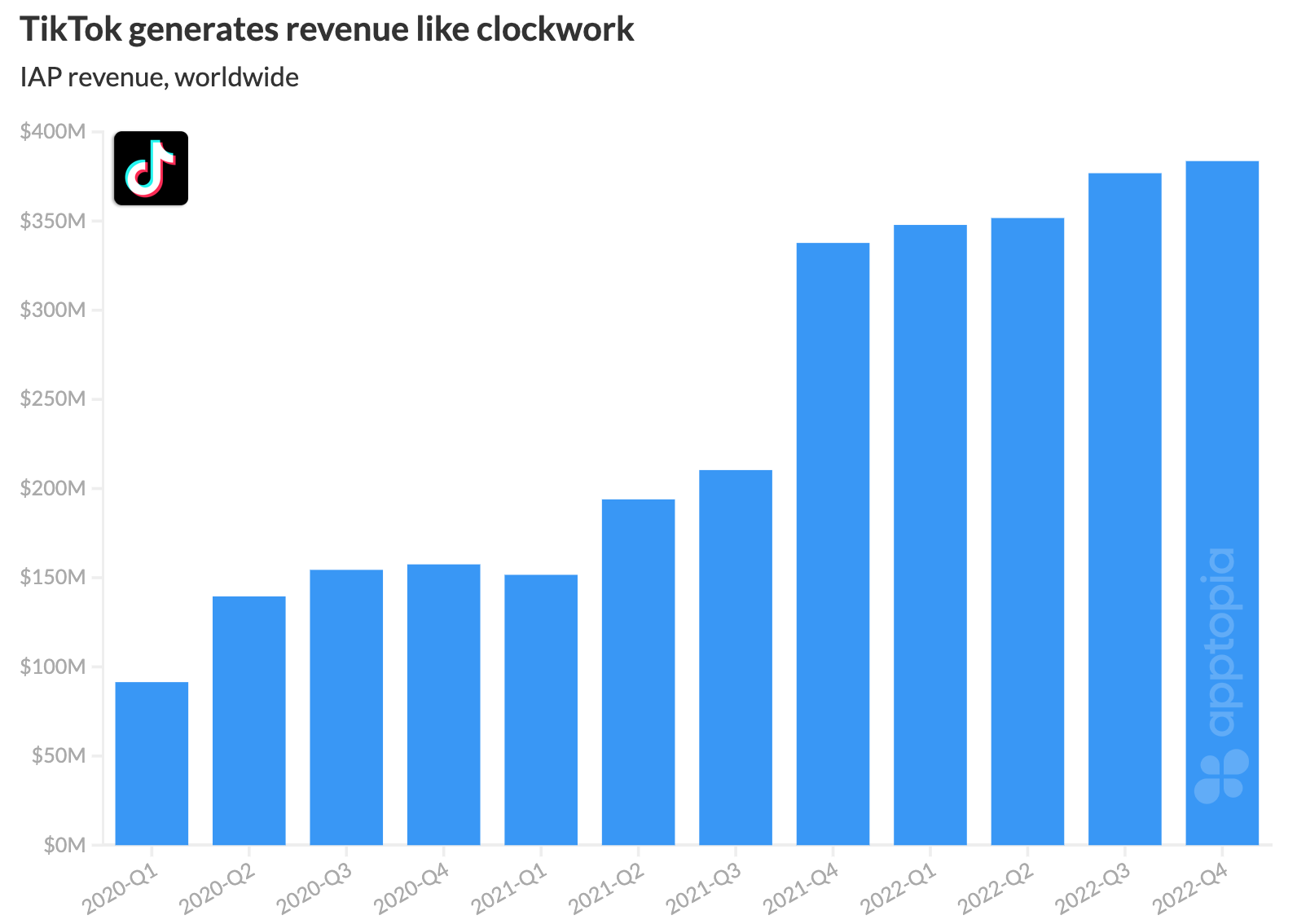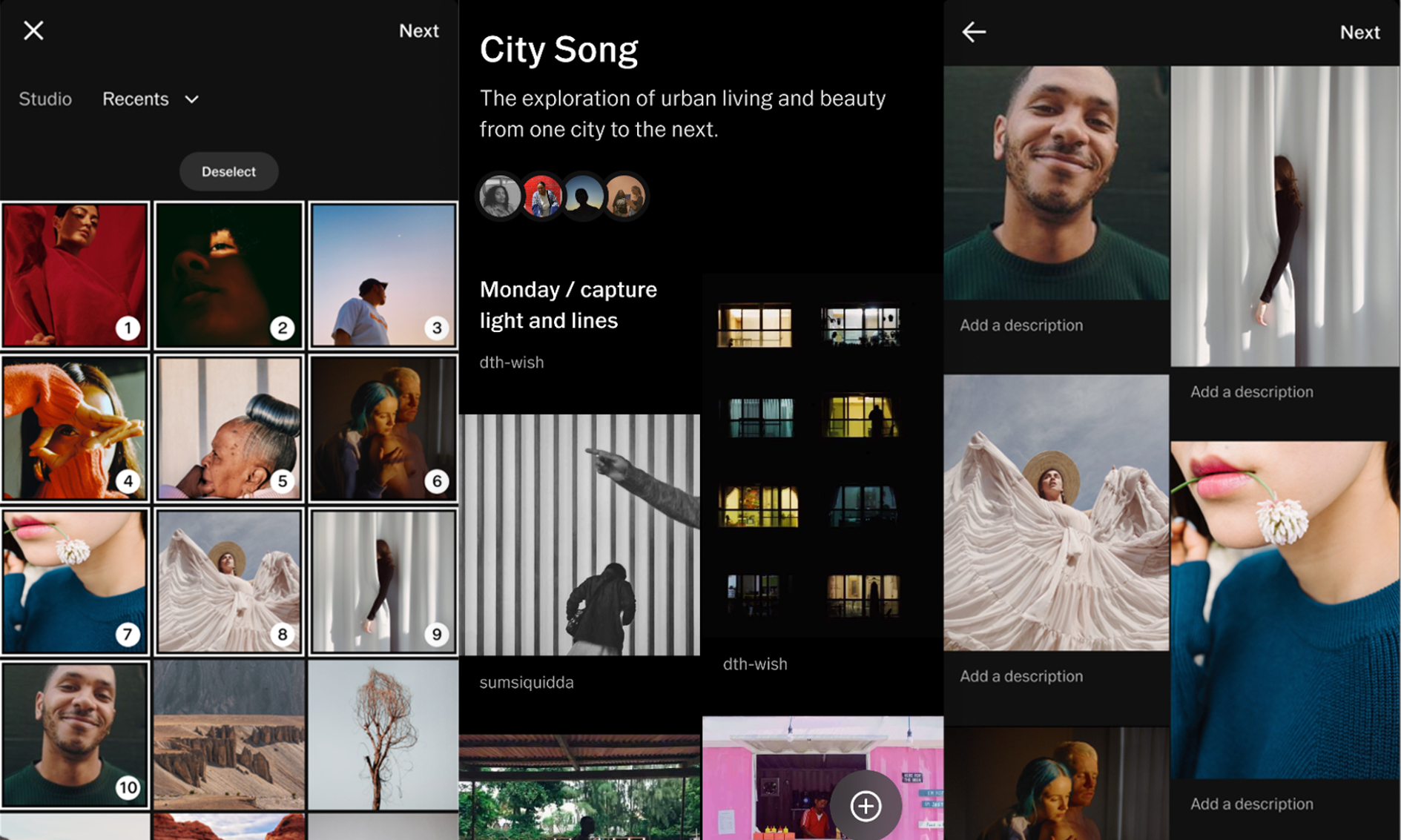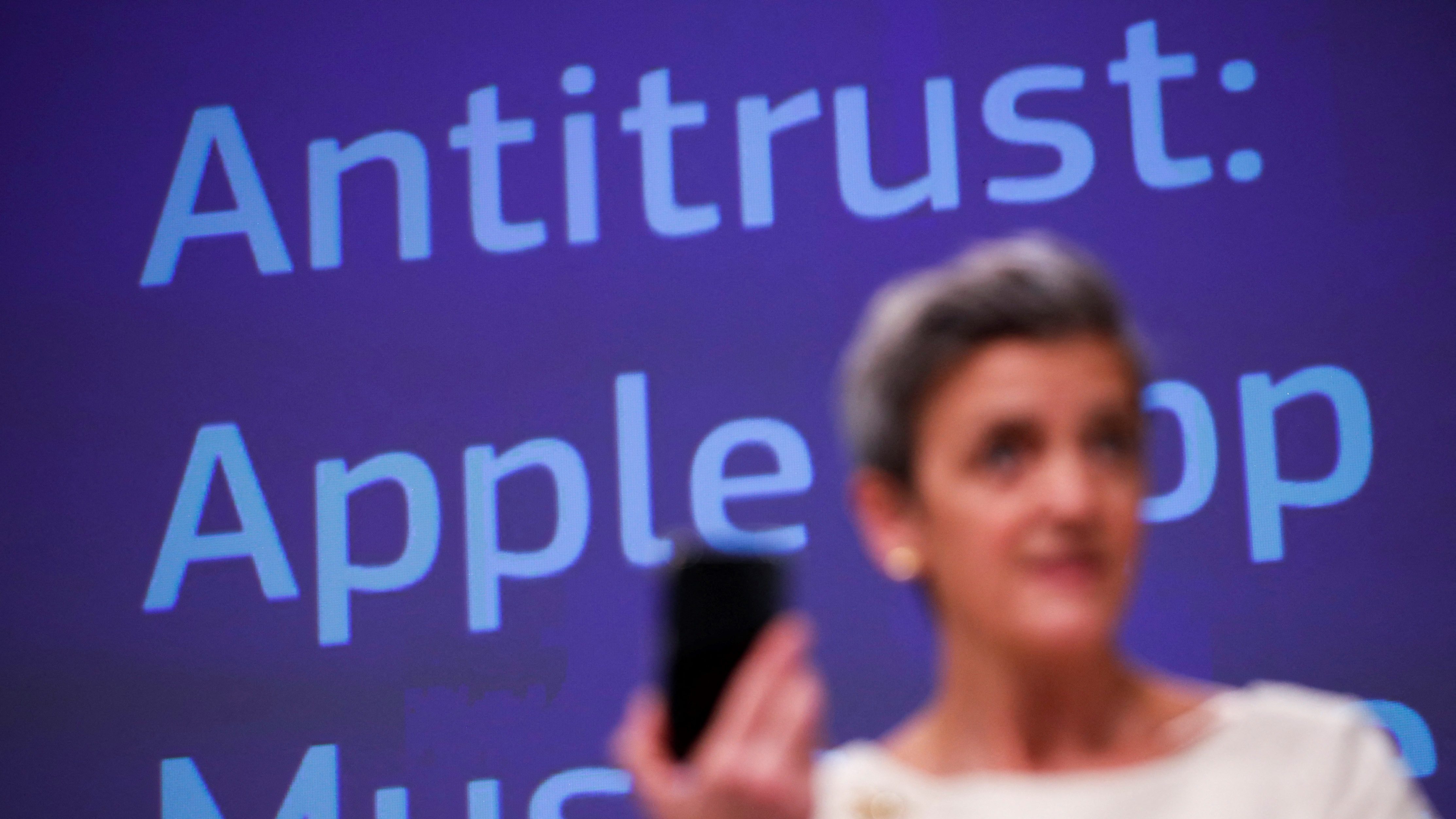Category: TECHNOLOGY
Another AV company hits the skids, Scout Motors picks a home and Tesla’s tepid investor day
The Station is a weekly newsletter dedicated to all things transportation. Sign up here — just click The Station — to receive the full edition of the newsletter every weekend in your inbox. Subscribe for free.
Welcome back to The Station, your central hub for all past, present and future means of moving people and packages from Point A to Point B.
FYI, next week I will be in Austin to attend SXSW. I’ll be on stage March 14 and March 15 and you can find me by going to the SXSW schedule. See ya there.
In the days leading up to Tesla Investor Day, there was a lot of chatter and speculation about what future products CEO Elon Musk might reveal. Welp, I wouldn’t describe the four-hour event as particularly illuminating.
Don’t get me wrong, Musk and an unusually long line of senior-level employees, talked a lot about how Tesla would be the driver of a global shift away from fossil fuels and towards renewable energy. There just wasn’t a lot of specifics on exactly how the company was going to achieve that. (I give a full rundown of the major highlights here, including confirmation that it is building a lithium refinery in Corpus Christi.
The bulk of the event was focused on the past. And there were no new details on Tesla’s next-generation EV and its upcoming factory in Mexico (besides confirmation that it was happening) nor did they address current issues with its Full Self-Driving software that is currently unavailable to those who opted to buy the $15,000 option due to a recall.
The market didn’t respond positively, perhaps because the event lacked that big product announcement, specific details on the next step in its so-called master plan 3 or Musk’s signature “one more thing” line.
You can drop us a note at tips@techcrunch.com. If you prefer to remain anonymous, click here to contact us, which includes SecureDrop (instructions here) and various encrypted messaging apps.
Micromobbin’
Aventon has launched its first cargo e-bike, the Abound for $2,199. The bike has options for front and rear storage and a payload capacity of 440 pounds. It’s got a top speed of 20 miles per hour, a 750w motor and range of up to 50 miles.
Cake is launching a B2B subscription offer for its e-mopeds and bikes. Cake Subscribe is an all inclusive service that gives businesses everything from vehicles to servicing and insurance for a monthly payment and no money down.
Delhi says it will only permit motorbike taxis if they’re electric. Uber said the city is risking the livelihood of over 100,000 drivers in the city. The announcement comes just a week after this newsletter reported that Delhi was coming down on apps like Ola and Uber operating motorbike taxi services without a permit.
France has proposed a bill that would require owners of e-bikes and e-scooters to register their vehicles.
HumanForest, the shared e-bike and e-moped service, has partnered with Uber Eats to provide couriers who use the platform with discounted rates. Couriers are eligible to receive a 10% discount on minute bundles, which translates to rides as cheap as £2.25 per hour.
Indonesia will start introducing a $460+ two-wheeler EV incentive in March.
Mosa has completed its first public trial in the UK of its smart parking infrastructure to help fight bicycle theft.
Ola will invest $920 million in battery and EV production in India’s state of Tamil Nadu.
Rad Power Bikes is doubling down on its utility e-bike offerings. The company launched its next-gen Rad Runner 3 Plus with an extended payload capacity of 350 pounds, alongside a suite of new cargo accessories like the Rad Trailer, complete with pet storage insert.
Yulu and Bajaj Auto are working together to produce a new electric moped for sharing.
— Rebecca Bellan
Deal of the week
Just a bunch of deals this week. Here are the ones that got my attention.
Air Company, a startup backed by JetBlue and Toyota that turns carbon dioxide into aviation fuel (and perfume, vodka and hand sanitizer), struck an up-to $65 million deal to help the Air Force capture CO2 and turn it into “sustainable” aviation fuel on base.
Avocargo, a German-based e-cargo bike rental service, filed for insolvency. And Kumpan Electric, a German moped manufacturer, filed for bankruptcy.
iMotion Automotive Technology Suzhou Co., a China-based automated driving developer, is considering a Hong Kong initial public offering that could raise $200 million to $300 million, Bloomberg reported citing sources familiar. The listing could take place as early as this year.
Jet Token, a private aviation booking and membership platform, plans to go public via a merger with special purpose acquisition company Oxbridge Acquisition Corp.
Li-Cycle Holdings, lithium-ion battery recycler in North America, has been conditionally approved for a $375 million loan from the U.S. Department of Energy through the agency’s Advanced Technology Vehicles Manufacturing program.
PteroDynamics, a vertical takeoff and landing (VTOL) aircraft manufacturer based in Colorado Springs, raised $7.5 million in a seed round co-led by existing backer Kairos Ventures and new investors Lavrock Ventures and CS Venture Opportunities Fund.
Stellantis agreed to sell its distribution business in Turkey for €400 million euros ($425 million) to its local partner.
Tier is reportedly trying to raise about $1 billion in debt and maybe in equity as the company tries to reach profitability this year.
Velotric, founded by Lime and Didi alumni, raised $7.4 million in a Series A round, which the company will use to expand its e-bikes in the United States.
Notable news and other tidbits
ADAS
Remember Argo AI, the Pittsburgh-based AV company backed by Ford and VW that shut down last year after the two automakers pulled support? Ford has resurrected parts of it. The automaker created a Pittsburgh-based subsidiary called Latitude AI that will work on improving Ford’s existing advanced driver-assistance system known as BlueCruise and developing new automated driving technology for its next-generation of vehicles. The 550-person subsidiary is primarily former Argo employees. (Reminder that Ford took a $2.7 billion writedown on Argo)
Autonomous vehicles
Aurora and Waymo, two companies attempting to commercial autonomous trucks, want a five-year exemption from Federal Motor Carrier Safety Administration regulations that require reflective triangles to be place around a vehicle if it pulls onto a highway shoulder. The companies want to instead use beacons mounted to the trucks.
Waymo issued a second round of layoffs this year. Combined with the initial cuts in January, the self-driving technology company has let go of 8%, or 209 employees, of its workforce. Meanwhile, the company said it will begin testing its autonomous Jaguar I-Paces without a human safety operator in Los Angeles in the next couple of weeks.
Embark Trucks is in trouble. The company is cutting 70% of its workforce (about 230 employees) and shutting down two offices. CEO Alex Rodrigues noted in an email to employees that the remaining 30% of workers will focus on winding down operations.
Earnings
Blink Charging had a mixed Q4 and full-year earnings report. Revenue beat analysts’ expectations by 5.2% with $61.1 million for Q4, but the company missed EPS estimates by 4.3%. Blink reported a net loss of $91.6 million. Shares were down for the company as investors worry that Blink has less than one year of cash runway. The company is unprofitable and doesn’t expect to reach that milestone in the next three years.
Innoviz reported $6 million in revenue for 2022, about an 11% increase from 2021. The company, which says its program with Volkswagen is still on track, did see its net losses shrink year over year. Innoviz reported a net loss of $126.8 million in 2022, down 17% from the $153.5 million in losses from the prior year.
Rivian generated $663 million in revenue in the fourth quarter and $1.66 billion for the full year, a result that was buoyed by an uptick in production and deliveries towards the end of the year but still wasn’t enough to meet Wall Street’s expectations. Rivian also said it would increase production in 2023 to 50,000 vehicles, a figure that was lower than expected. Shares fell on the trio of suboptimal news, including missed expectations, a recall and an increased, but still lower-than-expected production forecast for 2023.
Electric vehicles, batteries & charging
Ford will restart production of the Ford F-150 Lightning on March 13.
Lynk & CO, owned by China’s Geely Holdings, is bringing an all-electric car to enter the U.S. market in 2024.
Redwood Materials identified and recovered 1,268 end-of-life battery packs, totaling about half a million pounds of material a year after launching an EV battery recycling program in California. The packs were transported and recycled at its facility in Northern Nevada. From the recovered metals, Redwood said it is already beginning to produce battery materials, anode and cathode that can be returned directly to U.S. battery cell manufacturers.
Scout, the EV upstart spun out of VW Group, has picked South Carolina for its $2 billion factory. But there’s a lot more. Tim Stevens interviewed CEO Scott Keogh and learned more about the company’s plans to bring two rugged EVs — a truck and SUV — to market by 2026. Expect more information this coming week on the incentives package Scout received from the state.
TechCrunch+ reporter Tim De Chant explores why there are so many “gigafactories?” Hint: it’s not just EVs driving the expansion.
Gig economy
Chick-fil-A opened a break room at a location in NYC for a limited time to provide delivery workers a place to rest, warm up, charge their phones and have a snack in between deliveries. Meanwhile in India, Zomato is building out a series of Rest Points for gig workers to relax between deliveries.
Uber rolled out updates to its Shop and Pay feature that address three of the most commonly raised courier issues: out of stock items, digital payments and order clarity before accepting a trip. Rebecca Bellan writesUber is coming for Instacart.
In-car tech
Cariad, the software subsidiary under VW Group, launched a group application store (using Harman’s framework) that will bring dozens of apps including Spotify, Amazon Music, TikTok and gaming hubs Vector Unit and FRVR to Audi and eventually other brands under the German automotive group. The intent is for the group application store to stretch across VW Group’s lineup, including the rest of Audi’s portfolio and then onto Porsche and Volkswagen.
Ford applied for a patent on a system that would use connected car tech to help repossess vehicles.
Luminar held its investor day and provided details that built off its announcement at Mercedes-Benz tech event. A few items of note. The company acquired lidar-related IP from Seagate (the data storage technology company) and launched a semiconductor company called LSI that takes the chip design companies it has acquired and puts them all under one entity and with one focus. Luminar also unveiled its next-gen Iris lidar and software, which is the product that will be integrated into Mercedes vehicles by mid decade.
This was another interesting item: Luminar has hired Swiss Re to evaluate its tech’s safety claims and will develop an insurance product based off of those findings.
Tesla paused the rollout of its Full Self-Driving beta software in the United States and Canada following a recall of the system that federal safety regulators warned could allow vehicles to act unsafe around intersections and cause crashes.
See y’all next week.
Another AV company hits the skids, Scout Motors picks a home and Tesla’s tepid investor day by Kirsten Korosec originally published on TechCrunch
Alleged security breach leaves millions of dollars missing from Flutterwave accounts
Last month, Flutterwave, Africa’s largest startup by private valuation, was involved in a hack that resulted in over ₦2.9 billion (~$4.2 million) missing from its accounts, according to local tech publication Techpoint Africa.
According to the documents seen by the publication and reviewed by TechCrunch, unknown actors transferred the funds across 28 accounts in 63 transactions in early February. Police investigations are ongoing as Flutterwave, via legal counsel and law enforcement parties, has filed a motion and seeks to freeze accounts across 27 financial institutions that interacted with the missing funds, Techpoint Africa reported.
Several tweets regarding the alleged hack have also come up over the weekend. Some provided information about the hack, while others complained about frozen accounts that might be related to the hack. According to Techpoint Africa, the motion filed that 107 accounts, including the fifth beneficiaries of those accounts, are to be placed on lien/Post-No-Debit (PND). This directive restricts bank customers from withdrawing funds from their accounts.
The cause and method of the attack remain unclear. However, one of the postulations from online commentary is that the hack might have been socially engineered, meaning that merchants’ keys were compromised, allowing the hackers to access the monies in their Flutterwave accounts.
Meanwhile, Flutterwave, via a statement on the matter, has denied that it was hacked. s
At Flutterwave, we understand that our customers’ personal and financial information is of the utmost importance. We take this responsibility seriously and understand that any potential security breach can cause anxiety and concern among our customers. We want to reassure you that Flutterwave has not been hacked. As a financial institution, we monitor transactions through our transaction monitoring systems and 24-hour fraud desk and review any suspicious activity. We collaborate with other financial institutions and law enforcement agencies to keep our ecosystem safe and secure.
During a routine check of our transaction monitoring system, we identified an unusual trend of transactions on some users’ profiles. Our team immediately launched a review (inline with our standard operating procedure), which revealed that some users who had not activated some of our recommended security settings might have been susceptible.
We want to confirm that no user lost any funds, and we take pride in the fact that our security measures were able to address the issue before any harm could be done to our users.
Our commitment to keeping our users’ financial information safe and secure is why we invest heavily in security initiatives such as periodic audits, certifications, and licenses such as the PCI-DSS & ISO 27001. These are in line with global best practices in information security management.
We want you to continue to trust us and feel secure in using Flutterwave for your business needs. Our commitment is to enable your business growth while keeping your financial information safe and secure.
You may have recently heard some claims on Flutterwave’s security. We want to assure you that Flutterwave has not been hacked, and no customer funds were lost.
Thank you for choosing us
Read more here
https://t.co/a27ZIy0w1k pic.twitter.com/o3KfChucJ9
— Flutterwave (@theflutterwave) March 5, 2023
This is a developing story…
Alleged security breach leaves millions of dollars missing from Flutterwave accounts by Tage Kene-Okafor originally published on TechCrunch
Tesla slashes prices for Model S and Model Y in US
Tesla has cut the prices of its Model S sedan and Model X SUV in the U.S., according to the company’s website. This is the second time this year that Tesla has slashed prices, and it might be a bid to boost sales before the end of the quarter.
The Model S all-wheel drive is now available for $89,990, which is down 5.2% or about $5,000 from $94,990. The Model S Plaid is now $109,990, down 4.3% from $114,990.
The Model X all-wheel drive is going for $99,990, down 9.1% or $10,000 from $109,990. The Plaid is now $109,990, down 8.3% from $119,990.
The latest price cut comes after Tesla drastically slashed prices in January, making it at least the fifth time the automaker has reduced the cost of its vehicles in the past several months. Last week at Tesla’s investor day, held at the company’s Austin factory, CEO Elon Musk and other leaders discussed the importance of efficient manufacturing and cost cutting.
“The desire for people to own a Tesla is extremely high,” said Musk. “The limiting factor is their ability to pay for a Tesla.”
Tesla Models 3 and Y are still available for the $7,500 federal tax incentive in the U.S. for the rest of this month.
Tesla slashes prices for Model S and Model Y in US by Rebecca Bellan originally published on TechCrunch
https://techcrunch.com/2023/03/05/tesla-slashes-prices-for-model-s-and-model-y-in-us/
If you have more than one business model, you don’t have a business model
To be successful, a business needs to have a plan for revenue in the short term and profitability in the long. Early-stage founders might be tempted to come up with half a dozen ways the company could make money. Don’t fall into temptation: Five unproven solutions don’t make one actual solution.
Having said that, sometimes there might be several business models that could lead to profitability. The Business Model Canvas approach, where every aspect of the business is condensed onto one slide, offers a holistic view into every aspect of your business. For a pitch deck, however, I think it’s worth narrowing it down to two things: customer acquisition and lifetime value.
For acquisition, focus on where you find your customers, whether those acquisition channels are scalable, and what it costs to acquire a new customer, usually called customer acquisition cost, or CAC.
On the lifetime value front, examine how much each customer is worth, from the moment they show up in your product until they stop using your product. Every dollar they spend along the way is an individual customer’s lifetime value. From there, you can break your customers into different segments: One customer category could be people who come to your platform and immediately leave; another category can be customers who stay for weeks or months or years.
For the sake of simplicity, it’s usually enough to take the total money made from customers and divide that by the number of customers you have — that’s the average value of those customers so far. The challenge is to model out how long they’ll stay. Per definition, you’ll only know a customer’s true lifetime value after they leave; so here, you’ll have to build a model and make some assumptions about how much time your customers will spend with you, and how much money they will spend along the way.
A startup’s only mission is to find a repeatable business model
I’m quite partial to Steve Blank’s definition of a startup: “A startup is a temporary organization used to search for a repeatable and scalable business model.” Or, put differently, your company is meant to become a machine that can turn the $100 you put into the top into $150 falling out of the bottom. Take the $150, toss it back into the top of the machine, and you have a rapidly growing, viable, repeatable business model.
If you have more than one business model, you don’t have a business model by Haje Jan Kamps originally published on TechCrunch
https://techcrunch.com/2023/03/05/keep-it-simple-on-the-business-models/
Amazon and Better.com’s unlikely pairing
Welcome to The Interchange! If you received this in your inbox, thank you for signing up and your vote of confidence. If you’re reading this as a post on our site, sign up here so you can receive it directly in the future. Every week, I’ll take a look at the hottest fintech news of the previous week. This will include everything from funding rounds to trends to an analysis of a particular space to hot takes on a particular company or phenomenon. There’s a lot of fintech news out there and it’s my job to stay on top of it — and make sense of it — so you can stay in the know. — Mary Ann
Last week, my good friend and very talented journalist (and Equity podcast co-host) Natasha Mascarenhas and I reported that Amazon had struck a deal with embattled online mortgage lender Better.com to offer up a new benefit to employees. Specifically, Better.com announced it was launching Equity Unlocker, a program that allows employees to use their vested equity as collateral for a down payment when trying to buy homes. Amazon employees in Florida, New York and Washington State will be the first to try the tool. Unique about the program, according to Better.com, is that employees will have the ability to finance their homes without actually selling their shares, only needing to pledge vested equity.
The news, quite frankly, came as a bit of a shock to those of us who have been following the goings-on at Better.com. For the unfamiliar, the fintech company has had its fair share of struggles that have cast doubt on its future. Last May, TechCrunch reported on a filing that revealed that Better.com had swung to a loss of more than $300 million in 2021 after a rapid-fire decline in business brought on largely by a slowdown in the housing market and a surge in mortgage interest rates. Then in the first quarter of 2022 alone, Better.com recorded a staggering net loss of $327.7 million, according to an SEC filing.
The company’s reputation also took a huge hit over the manner in which it conducted numerous rounds of mass layoffs, which also resulted in an executive exodus. Better.com also made headlines last July when it appeared to still be moving forward with its SPAC filing despite lackluster performance of blank-check combination debuts.
So why would Amazon want to be associated with, and connect its own employees to, a company that appears to be far from growing and has a less-than-stellar reputation? Well, we asked Amazon just that (not in those exact words, of course). And the spokesperson told me lots of things about how the company wanted to provide all sorts of wellness benefits to its employees and this fit into that thesis. But he never specifically answered, “Why Better.com?” The fintech itself noted that it has been an Amazon Web Services customer since 2015 and its loan-origination system is powered entirely by the software. A very quick Google search on the part of TC senior reporter Rebecca Szkutak turned up at least two other online mortgage lenders who are also AWS customers, so surely the retail giant had other options.
Beyond that, the idea of giving employees the option to use vested equity toward the purchase of a home just doesn’t….seem very appealing. What if the shares drop in value? How does it even work? Who even has enough vested equity to use as collateral? On top of that, Better.com says it will charge 0.25% to 2.5% higher interest rates for employees who choose to purchase a home this way. Mortgage interest rates are already high enough these days — hovering around 6%. Tacking on another 2.5% pushes someone into the 8% range. Needless to say, we are all super curious to see how this ends up panning out and I plan to check back in about it in a few months.
Meanwhile, speaking of Better.com’s SPAC filing, HousingWire reported last week that “blank-check firm Aurora Acquisition Corp. extended the deadline to complete its merger with struggling digital mortgage lender Better.com for the third time. The deadline for the merger is now September. The decision was made during Aurora’s shareholder’s meeting held on February 24, filings with the U.S. Securities and Exchange Commission (SEC) showed.”
The notion that Better.com, which has had so many setbacks and so much negative publicity, could actually go public in an environment where even companies that are growing and can share positive financial metrics are hesitating is pretty difficult to believe. I, for one, am very curious as to how the company is staying afloat.
To hear the Equity team’s thoughts on the Amazon/Better.com partnership (and much more!), listen to the podcast here. And while you’re at it, tune in to my one-on-one conversation with Index Ventures partner and fintech lead Mark Goldberg. We had a blast discussing everything fintech and Mark didn’t hold back! Oh, and ICYMI, I also spoke with Hans Tung, managing partner of GGV a few weeks back. You can catch that super interesting convo here.
Weekly News
Reports Romain Dillet: “The all-in-one fintech app Revolut has released its annual report for 2021. While 2021 ended more than a year ago, this report includes some significant figures as the company nearly tripled its revenue between 2020 and 2021. Because of this explosive growth trajectory, the UK digital bank reached profitability for the first time. Revolut’s financial success starts at the top of the funnel. At the end of 2021, Revolut had more than 16 million customers, representing a 46% increase compared to 2020.”
Last week, we wrote about Klarna’s momentum in the U.S. This week, the Swedish payments giant revealed that despite a large ($1 billion) operating loss in 2022, it expects to return to profitability this year. In this piece, Alex Wilhelm asks, “How much progress is Klarna making toward profitability?” He wrote: “The former startup has had a publicly difficult few quarters. From seeing its valuation cut sharply to layoffs, the news around Klarna has been negative for some time. Now that we have the company’s financial data, we can take a more detailed look at how it performed amid all the noise.”
Reports Aisha Malik: “DoorDash is launching its first-ever credit card with Chase. The DoorDash Rewards Mastercard will provide cardholders the opportunity to earn cash back on delivery and every other purchase made with the card…The launch of the new credit card indicates that DoorDash is looking for ways to drive customer loyalty and keep its platform at the forefront of its users’ minds. The move also gives DoorDash the ability to offer additional perks for users while opening up new revenue streams.”
Reports Carly Page: “Hatch Bank, a digital-first bank that provides infrastructure for fintech companies offering their own brand credit cards, confirmed hackers exploited a zero-day vulnerability in the company’s internal file transfer software that allowed access to thousands of customer Social Security numbers.”
London-based Wise, formerly called TransferWise, launched two new products in the U.S. — Wise Business cards and sending money with a link. It also revealed a new brand look that it says “draws inspiration from its now 16 million customers worldwide.” The company also told me via email that since publicly listing on the LSE in July 2021, it has grown its global customer base by nearly 6 million.
Amsterdam-based payments behemoth Adyen claims that it has become the first to embed the Click to Pay experience into its online checkout flow globally. Via email, a spokesperson told me: “When purchasing online, the majority of ‘guest shoppers’ are typing in their card details manually in order to make a purchase.” According to the spokesperson, the Click to Pay feature is “a new way of paying online that combats the risk of drop-off at the checkout stage” with benefits such as simplifying checkout, being more secure (the primary account number is not typed in at checkout and the shopper receives a one-time password), and being universal in that it can be used across both devices and browsers. More here.
Reports PYMNTS.com: “San Francisco-based financial services platform Modern Treasury is introducing a product called ‘Global ACH’ which it bills as ‘a new payment service’ that enables lower-cost cross-border transfers than options like SWIFT by utilizing local payment rails. To launch Global ACH, Modern Treasury is partnering with Silicon Valley Bank…Modern Treasury said Global ACH ‘provides a number of advantages over current cross-border payment options” in that it’s less expensive than SWIFT and other third-party options.”
After we covered Stripe’s Tap to Pay news last week, PayPal reached out to let us know that it had launched Tap to Pay on Android in the U.K., The Netherlands and Sweden in May 2022. It’s since launched in additional European Markets. Here’s the release announcing our launch in the U.K. on May 5, 2022. It is also working with Apple on Tap to Pay, which Ivan Mehta reported on in November.
Did you know that there is a neobank targeting doctors? Panacea Financial describes itself as a “bank built for doctors, by doctors.” Via email, a company spokesperson told me: “One young doctor’s car accident and another’s hope of refinancing his $300,000+ student loans led to the creation of Panacea to help other doctors with similar needs and more.”
Other news
Greenlight offers new workplace financial benefits designed for families
Public.com announces that higher yield “treasury accounts are now available to all”
Robinhood Wallet is now available to all iOS customers globally
Wealthfront introduces stock investing
Step launches stock investing for teens and young adults
Mexican BNPL startup Kueski achieves 10 million loans disbursed to more than 1.8 million consumers
First Fidelity Bank enters BaaS space with Episode Six partnership
Image Credits: DoorDash
Funding and M&A
Seen on TechCrunch
Insurtech giant Equisoft lands $125M investment, eyes acquisitions
Born of drone tech, insuretech Flock raises $38M Series B to nudge commercial drivers towards safety
Pagos raises $34M as the demand for ‘payment intelligence’ rises
Spade turns credit card transaction gibberish into clear, actionable data
Varo, Stripe said to be raising new funds at much lower valuations
And elsewhere
Highway Benefits raises $3.1M in seed funding
SoftBank leads Series A for Chilean startup Rankmi, which merges with Mexican payroll provider Osmos
TTV Capital closes Fund VI at $250 million to invest in early-stage fintechs
Fintechs That Are Hiring
The good news is that I have been inundated with DMs and emails from people letting me know that their fintech company is hiring. The bad news is that there is no way I can include all of them in this week’s newsletter. So if you reached out and don’t see your company here, check out upcoming editions of The Interchange. I’m making my way down the list!
- Corporate spend management (and fully remote) company Airbase, which secured $150 million in debt financing from Goldman Sachs last July, is hiring across about 18 roles.
- Wealthfront, which last year landed $69.7 million from UBS in a deal valued at $1.4 billion after a planned merger fell apart, has 17 open positions across engineering, design, marketing, finance, and more.
- SmartAsset, a marketplace that connects consumers to financial advisors and raised $110 million in a Series D round of funding in June of 2021 at a unicorn valuation, is hiring across several remote roles.
- Alternative investments platform iCapital, which has over $150 billion AUM, says it’s hiring for 100 roles.
- Fintech-focused communications agency KCD PR is hiring and has several open positions with plans to add 3–5+ roles in 2023.
Thinking of coming to Disrupt this year? We’d love to have you! But FYI, this is your last chance for super-early-bird tickets. That’s it for this week! I’m off to enjoy the 70-something- degree weather here in Austin while I can. Hope you all have a wonderful weekend — see you next time. xoxoxo, Mary Ann
Amazon and Better.com’s unlikely pairing by Mary Ann Azevedo originally published on TechCrunch
https://techcrunch.com/2023/03/05/amazon-and-fintech-better-coms-unlikely-pairing/
Will one good quarter appease the activist investors dogging Salesforce?
Salesforce is dealing with five powerful activist investors. One way to get these firms off your back is performing well, which drives up stock prices. Salesforce checked that box with a stellar quarterly report this week, beating street expectations by a wide margin.
That could buy some time for the beleaguered company, and it was certainly better than a poor report. But is it enough to keep the activist investors at bay?
On the same day the company was to report earnings, one of those activists, Elliott Management, indicated that it would be putting forth its own slate of candidates for the board of directors, a move aimed at gaining enough voting control to impose its agenda.
With successful quarterly revenue of $8.38 billion, Salesforce now faces scrutiny regarding how it could lay off 10% of its workforce amid such great performance (and news reports it paid actor Matthew McConaughey $10 million to act as a consultant). None of this is a great look for Salesforce, especially as a company that promotes itself as being a responsible capitalist.
The executive suite finds itself caught in between critics with conflicting agendas, all while trying to run a company. It’s unlikely that anyone has any sympathy for CEO Marc Benioff and his team as they try to run this gauntlet, but it is their reality for the time being.
Will this week’s promising report fend off the activist investor hawks, who are gunning for the company and pressuring it to cut costs even more? And can Salesforce manage to keep the growth trend going, especially with lower growth guidance for next fiscal year and an uncertain economy?
One thing’s clear: It’s probably not going to get easier anytime soon.
Under pressure
We don’t know what the activists are thinking as they look to increase the value of their investments, but Elliott Management, which invested billions of dollars in Salesforce, issued a statement after earnings came out indicating it was pleased, which is no small feat.
Will one good quarter appease the activist investors dogging Salesforce? by Ron Miller originally published on TechCrunch
https://techcrunch.com/2023/03/05/salesforce-activist-investors-earnings-results/
OpenAI launches an API for ChatGPT, a startup attempts a humanoid robot, and Salesforce turns it around
TGIF, my TechCrunch homies. It’s that time of week again — the time for Week in Review, where we recap the past five days in tech news. As always, lots happened, so let’s dig in sans delay.
Well, perhaps with a slight delay. I’d be remiss if I didn’t mention that TechCrunch Early Stage, TechCrunch’s annual founder summit, is around the corner — on April 20, to be exact. Set in Boston this year, Early Stage will host sessions with advice and takeaways from top experts and provide opportunities to meet entrepreneurs taking incredible journeys. Trust me, it’ll be worth the trek.
Disrupt, TechCrunch’s flagship conference, will also be well worth the trek. (And I’m not just saying that because yours truly will be participating — I swear it!) This year, Disrupt will feature six new stages with industry-specific programming tracks, inspired by our popular TC Sessions series. Experts across climate, mobility, fintech, AI and machine learning, enterprise, privacy and security, and hardware and robotics will be in attendance and will have fascinating insights to share.
So, signed up for both events? Great. Now, here’s the Week in Review!
most read
ChatGPT in API form: OpenAI introduced an API that’ll allow any business to build ChatGPT tech into their apps, websites, products and services. (As a refresher, ChatGPT is the free text-generating AI that can write human-like code, emails, essays and more.) Snap, Quizlet, Instacart and Shopify are among the early adopters.
Becoming human: A startup, Figure, emerged from stealth this week promising a general-purpose bipedal humanoid robot. (Brian broke the news of the startup’s existence in September, in case you missed it.) The Figure robot’s alpha build, which the company completed in December, is currently being tested in its Sunnyvale offices. It’s focused on a wide range of manual labor tasks for now.
Warrantless surveillance: Zack reports that the Secret Service and ICE’s Homeland Security Investigations unit repeatedly failed to obtain the correct legal paperwork when carrying out invasive cell phone surveillance. The findings were published last week by Homeland Security’s inspector general, tasked with oversight of the U.S. federal department and its many law enforcement units, which said that the agencies often used cell-site simulators without obtaining the appropriate search warrants.
Salesforce turns it around: This week, Salesforce reported its fiscal fourth-quarter earnings, including revenue that topped expectations and guidance that came in ahead of street estimates. It was a much-needed win for the company, which was facing increasing pressure from activist investors, including Elliott Management.
Hydrogen powered: Startup Universal Hydrogen took to the air this week with the largest hydrogen fuel cell ever to fly. The 15-minute test flight of a modified Dash-8 aircraft was short, but — as Mark writes — it showed that hydrogen could be viable as fuel for short-hop passenger aircraft. (Many technical and regulatory barriers stand in the way, however.)
Pause your streak: Ivan reports that Snapchat will allow users to pause their Snap streaks — where you send a snap to your friend once every 24 hours — so they don’t have to worry about breaking them if they decide to not access the app for a while.
New nonprofit for AI: A community-driven AI research group, EleutherAI, is forming a nonprofit foundation. Funded by donations and grants from backers, including AI startups Hugging Face and Stability AI, former GitHub CEO Nat Friedman, Lambda Labs and Canva, the nonprofit plans to research issues around large language models along the lines of OpenAI’s ChatGPT.
Ceasing “Succession”: The official trailer for the final season of “Succession” premiered this week, and it appears that the series is ending with an epic mic drop. As Lauren writes, the HBO series was not only hugely successful, with its 13 Emmy wins and five Golden Globe awards, but it was also an interesting commentary on the media industry. Creator and showrunner Jesse Armstrong has admitted to taking inspiration from lots of places, including the Rupert Murdoch playbook.
audio
Like Elon Musk’s meddling with Twitter, the TechCrunch podcast machine never stops. This week on Equity, Mary Ann, Becca and Alex gathered to riff through the week’s biggest startup and venture news, including what’s happening in the land of NFTs, AI versus crypto in venture hype cycles and Amazon’s unlikely partnership. And on The TechCrunch Live Podcast, Matt Burns spoke with Sagi Eliyahu, CEO and co-founder of Tonkean, and Foundation Capital partner Joanne Chen, all about addressing blind spots in leadership and the best ways for founders to work with their board of directors.
TechCrunch+
TC+ subscribers get access to in-depth commentary, analysis and surveys — which you know if you’re already a subscriber. If you’re not, consider signing up. Here are a few highlights from this week:
The “branding” issue for female VCs: The goal of being a VC is to generate returns for limited partners, and there’s an understanding that a diverse startup ecosystem will lead to better outcomes for all. But Natasha and Rebecca write about how balancing those two, for female VCs, has often manifested in different, often frustrating ways.
Jumping on the AI bandwagon: Camilla Tenn, a PR consultant for Eleven International, writes on whether tech startups should shift their messaging toward AI-related topics. If AI-related coverage can get a new, unknown brand into its target publications today, she argues, it could help get the brand’s pitch deck in front of potential investors tomorrow.
Turning open source into a business: Despite the premise of open source software distribution being “free,” multibillion-dollar companies like Red Hat, MongoDB, GitLab and Elastic have already broken ground building profitable businesses with open source at their core. But is it possible for a smaller open source project to find its way into this land of commercial opportunity? Victoria Melnikova investigates.
OpenAI launches an API for ChatGPT, a startup attempts a humanoid robot, and Salesforce turns it around by Kyle Wiggers originally published on TechCrunch
This Week in Apps: Jack Dorsey-backed Bluesky, social apps’ teen protections, Twitter clients get help
Welcome back to This Week in Apps, the weekly TechCrunch series that recaps the latest in mobile OS news, mobile applications and the overall app economy.
The app economy in 2023 hit a few snags, as consumer spending last year dropped for the first time by 2% to $167 billion, according to data.ai’s “State of Mobile” report. However, downloads are continuing to grow, up 11% year-over-year in 2022 to reach 255 billion. Consumers are also spending more time in mobile apps than ever before. On Android devices alone, hours spent in 2022 grew 9%, reaching 4.1 trillion.
This Week in Apps offers a way to keep up with this fast-moving industry in one place with the latest from the world of apps, including news, updates, startup fundings, mergers and acquisitions, and much more.
Do you want This Week in Apps in your inbox every Saturday? Sign up heretechcrunch.com/newsletters
Top Stories
Social apps & “pseudo” teen protections
Amid a lack of U.S. regulation over how social media companies should be protecting their teen and minor users, big tech companies are self-policing, hoping to ward off any coming laws that could impact their businesses. But the companies’ so-called teen safety features and protections now being rolled out are doing little to actually limit the negative impacts of teens’ social media use. At best, they present small roadblocks or annoyances that any teen user could easily bypass. At worst, as in the case of Snapchat’s new Streaks pausing feature, they actually force users to pay for the benefit of a less addictive app and better mental health.
Let’s start with Instagram. The company this week was touting its expanded tests of an age verification feature that asks users to verify their age if they attempt to change their age to an adult (18 or older) in the app. The company offers one of three methods to confirm the user’s age: they can upload a government ID, take a video selfie, or get others to vouch for their age. The ID upload is obviously the most accurate method here, as video selfies can be hit or miss. Still, these first two options may feel a bit more invasive in terms of privacy. Plus, many in the under-18 crowd may not yet have a government ID if they haven’t gotten their driver’s license.
That’s why Instagram offers the third option of “social vouching.”
Image Credits: Instagram
But the way it’s implemented puts the control largely in the teen’s hands. A parent or guardian does not have to be asked to verify the teen’s age. Instead, the teen is allowed to hand-select three users among their mutual followers who will vouch that the teen is the age they say they are. Those vouching for the teen will receive a request, which they have to respond to within 3 days. This request presents several options for them to choose from such as “under 13 years old,” “13-17 years old,” “18-20 years old,” “21 years or older” or “I’m not sure.”
Instagram claims these users must also be at least 18 (assuming their age is real in the first place) and they must meet “other safeguards” but nothing about this option is documented in the site’s Help pages.
In practice, it would be exceedingly simple for a teen to simply ask their three friends to click the “18” option if they were trying to work around the system. As a result, this is not any sort of real preventative measure, it’s simply a roadblock a teen could easily avoid. (And let’s not forget that once the teen is “officially” 18, Instagram can use their data for ad targeting in more expansive and revenue-boosting ways!)
Next, there’s TikTok, which made headlines this week for its new 60-minute limit for teens, if it’s even fair to call it that. While the under-13 users will be blocked from continuing to watch without a parent or guardian’s permission, older teens can choose for themselves.
In the case of the former, the parent would need to enter a passcode to enable 30 more minutes of viewing for their under-13 child. However, all other teens under 18 will simply be prompted to enter a passcode to keep watching TikTok. Even the company acknowledges this isn’t really a limit on TikTok viewing, noting the passcode entry screen is there to require the teens “to make an active decision to extend that time.” It’s also just another roadblock and one designed to be easily bypassed.

Image Credits: TikTok
But while Instagram and TikTok are at least gesturing toward teen safety and better mental health, Snap has decided to outright charge for it.
As any teen knows, one of the company’s most addictive features is the app’s “Snap Streaks,” which tracks how many days in a row two Snapchat users have sent Snaps back and forth to one another. Teens consider this measurement to be an indication of the strength of their friendship, but in reality, the Streaks have little point beyond encouraging repeat app opens and Snapchat addiction. The problem is so bad among teens that it’s been the focus of government intervention and proposed legislation at various times.
This week, Snap said it would test — not launch, mind you, but test — a new feature that would allow users to pay for Streak Restores.
This option would let them reignite a Streak in the event they accidentally let it drop. The option could potentially fend off customer service requests from teens who are so addicted to streaks that they email the company to beg for them back. In addition, Snapchat+ subscriptions will soon gain a feature that would allow users to freeze their streaks any time they needed a break, the company said.
This is an incredible thumbing of its nose by Snap at all the hubbub around teen safety and mental health protections. Not only is it doing nothing to address the root cause of the problem — that it gamified friendships among a psychologically vulnerable demographic — it’s asking users to pay for the privilege of unwinding from their addiction. The fact that the launch is being widely celebrated is only further proof of how desperate Snap’s users have become to have any options to limit their in-app screen time. It’s like charging opioid addicts for their methadone. Truly mindblowing.
Jack Dorsey-backed Bluesky hits the App Store and other Fediverse news
Bluesky, the Twitter alternative backed by Twitter co-founder and CEO Jack Dorsey, hit the App Store this week and more testers are gaining access. Though the app is still only available as an invite-only beta, its App Store arrival signals that a public launch could be nearing.
We hadn’t heard much from Bluesky since October 2022, when the team behind the project shared an update on the Bluesky blog, detailing the status of the social protocol that powers its new Twitter-like app, also called Bluesky. Last year, Bluesky said it had received $13 million to ensure it had the freedom and independence to get started on R&D and noted Jack Dorsey was on its board. (Because apparently, Twitter’s own board is asleep at the wheel!)
AT (originally called ADX, or “Authenticated Transfer Protocol,”) is Bluesky’s main effort while the Bluesky mobile app serves to showcase the protocol in action. Similar to the ActivityPub protocol that powers Mastodon, AT offers the means of creating a federated and decentralized social network.
TechCrunch was able to go hands-on with the Bluesky app this week, which you can read more about here, but found it to be a stripped-down Twitter clone for the most part. Its uniqueness is more about the underlying technology rather than its user interface, it seems.
Bluesky has faced some criticism, notably from Mastodon and other developers, who pointed out that ActivityPub — a recommended W3C standard — already powers a large and growing “Fediverse” of interconnected servers. Already, other companies have committed to or have at least discussed plans to adopt ActivityPub, including Flipboard, which announced its Fediverse plans this week, as well as Medium, Tumblr and possibly Flickr.
If there is any Fediverse momentum, it’s from ActivityPub for the time being.
We also checked in with Tumblr to find out where the company was with its own Fediverse ambitions since we hadn’t heard much about it plans lately. Automattic CEO Matt Mullenweg told us the company is actually testing all the protocols, including ActivityPub, Bluesky and Nostr.
“Tumblr is quite large, and we don’t want to break anything in the Fediverse by turning things on willy-nilly, so we’re digging into the protocols,” he said. There’s no ETA yet on when the company might make a decision, however.
Tweetbot & Twitterific ask customers to decline refunds in rare App Store exception
Twitter last month officially banned third-party clients, putting a sudden end to popular apps, including Tweetbot, Twitterrific, and others. This week, in an unusual turn of events, two developers have updated their shuttered apps with new functionality: They’re asking their subscribers to decline to receive a refund by clicking a new “I don’t need a refund” button in their nonfunctional apps. And, in the case of Tapbots’ Tweetbot app, users can opt to transfer their subscription to the company’s newest app — its Mastodon client Ivory — instead. The options allow subscribers who are sympathetic to these indie developers’ plight to offer support by not asking for their money back.
It’s an unprecedented situation, to say the least, and one most subscription-based iOS apps wouldn’t ever have to face. In most other scenarios, a company’s decision to put an end to API access, as Twitter did, would have been telegraphed well in advance. This would allow the businesses dependent on the API functionality to communicate with their customers about the change and prepare to take the next steps. The third-party Twitter clients, however, had no warning. Their businesses were ruined overnight though they had done no wrong. What’s more, they would have to pay back users’ pro-rated subscriptions out of pocket.
That situation seems to have paved the way for an equally unusual exception to App Store rules, which typically wouldn’t allow developers to solicit customers to decline refunds for non-functional apps. Subscribers can choose to click a button in the app to allow the developers to keep their money — which, we’d advise, everyone to go do now.
Platforms

Image Credits: Google
- Google announced new Android features at Mobile World Congress this week, alongside updates for Chromebook and Wear OS. Among the changes, Google said Fast Pair will soon work with Chromebook to connect headphones already configured with an Android device; expanded noise cancellation for Google Meet on more Android devices; a Google Keep widget for Home screens; the ability to use a stylus or touch the screen to annotate PDFs in the Google Drive app for Android; and a way to increase the text size in Chrome up to 300% while preserving the layout. Wear OS will receive two new sound and display modes to improve watch accessibility.
- Google’s Pixel Watch gained a fall-detection feature that uses motion sensors and on-device machine learning to identify if a user has taken a hard fall. The watch can then connect the user with help, if need be. Apple has offered a similar feature since 2018’s launch of the Apple Watch Series 4.
- Google announced upcoming policy changes aimed at improving the quality of apps for Wear OS and how they appear in the Google Play Store. The changes speak to how the app should be designed and how features should appear, among other things. The requirements go into effect on August 31. Google also noted all Wear OS apps must target Android 11 (API level 30) by August 31 as well in order to remain discoverable by users with newer Android OS versions.
- Recommended Reading: TechCrunch’s Brian Heater sat down with Android exec Sameer Samat to talk ecosystems, regulation and competition in a wide-ranging interview. You can dig in here.
Apple
- Apple rolled out iOS 16.4 beta 2 for developers alongside the second developer betas for iPadOS 16.4, tvOS 16.4 and watchOS 9.4. The betas include more hints about Apple Music Classical, the rumored streaming service in development. The software also confirms the coming launch of Apple Pay in South Korea, which had already been given the green light.
- The App Store Connect tool was updated to now allow developers to use peer group benchmarks for metrics about their apps. This allows developers to compare their app’s performance with others like them without having to subscribe to a third-party measurement firm’s data.
App Updates
AI
- Snap introduced My AI, a new in-app chatbot that uses the latest version of OpenAI’s GPT technology. The feature, which is only offered to Snapchat’s paid subscribers (Snapchat+), can do things like suggest birthday gift ideas, help with trip planning, suggest recipes, and other less serious tasks. Users can also personalize the AI by giving it a name and customizing the wallpaper for their chat.

Image Credits: Snapchat
- Meta CEO Mark Zuckerberg also announced the company will build a new top-level product group focused on integrating generative AI into its services and developing “AI personas that can help people in a variety of ways.” In the near term, the company said it will begin testing text-based AI tools in WhatsApp and Messenger, likely similar to ChatGPT. It also said it will experiment with AI-aided filters and ad formats on Instagram as well as video and multi-modal experiences.
- Windows 11 added the new Bing to its taskbar after previously bringing it to its Edge desktop browser followed by the Edge, Bing and Skype mobile apps.
- Brave Search launched a new “Summarizer” feature, which is powered by different large langue models (LLMs), but not OpenAI’s GPT. the feature will become available within desktop and mobile web browsers but was not yet natively integrated into Brave’s native mobile browser app.
- TikTok’s newest viral beauty filter, “Bold Glamour,” appears to be AI, notes The Verge. But TikTok wouldn’t confirm. Unlike other filters, Bold Glamour completely alters’ users’ appearances — but in a way that makes the effect look less cartoonish and more subtle. Experts believe the filter is likely using ML, specifically Generative Adversarial Networks, or GANs. The impressive part is that TikTok has been able to bring this technique to mobile with minimal glitches, the report says.
Social

- Apptopia crunched the numbers on social apps’ in-app purchases. Companies are now looking to direct user payments, including subscriptions and other in-app purchases, as Apple’s ATT changes have cut into their ad revenues. Among the highlights, the report found that TikTok has earned $205 million more than Facebook, Twitter, Snap, and Instagram combined on in-app purchases in 2023 so far. The full group has also grown their collective quarterly IAP revenue 91% since the launch of ATT. Snapchat+ is also outperforming Facebook on daily IAP revenue by 20% on average.
- VSCO says it’s expanding its social features in Spaces, its collaborative galleries where photographers can upload images around a theme and chat. In mid-March, VSCO will make it possible for users to share text-based posts in Spaces and will allow users to message each other, regardless of follow status. It will also introduce new 9×16 auto-generated images, optimized for Instagram Stories and the like, among other improvements.

Image Credits: VSCO
- Reddit added new features including the ability to find comments within a post from the search bar, which will arrive on desktop, iOS and Android. It also noted other improvements, like its subreddit search algorithm that’s been enhanced to surface more relevant subreddits for most searches, updates to autocomplete, and easier ways to browse video results with up and down swipes in video search results.
- Twitter’s paid subscription Twitter Blue is now available to more than 20 new countries in Europe, including Netherlands, Poland, Ireland, Belgium, Sweden, Romania, Czech Republic, Finland, Denmark, Greece, Austria, Hungary, Bulgaria, Lithuania, Slovakia, Latvia, Slovenia, Estonia, Croatia, Luxembourg, Malta and Cyprus. The expansion makes the $8/mo plan available in a total of now 35 countries, including the U.S.

Image Credits: Instagram
- Instagram began testing its age verification tools in more countries, including Canada and Mexico. The test initially launched in the U.S., then later rolled out in Brazil and Japan in October. If a user attempted to change their age to 18 or up, the app would require them to verify using one of three methods: uploading an ID, recording a video selfie or asking mutual friends to verify their age.
- Pinterest is alpha testing a new video advertising product that allows brands to reach consumers from a more prominent position within the company’s mobile app. With the “Premiere Spotlight” ad advertisers will gain access to a premium placement for 24 hours on the Pinterest app’s search page, where they are able to feature an add with Pinterest’s max width video format.
- TikTok parent company ByteDance launched Lemon8 in the U.S. and U.K., an app that’s a lot like the Chinese social shopping app Xiaoghongshu (Little Red Book). Like TikTok, the app has a Following and For You feed, but is described more as a lifestyle community. The company has been paying creators in the U.K. to post on the app.
- Meta will now allow for longer Facebook Reels of up to 90 seconds, up from 60 seconds previously. It is also added more creative tools, including a new templates feature that lets users create Reels with trending templates, similar to ByteDance’s CapCut.
Streaming & Entertainment

Image Credits: TikTok
- Ahead of TikTok CEO Shou Zi Chew’s testimony before Congress planned for March, the company introduced more well-being features for teens, including screen time controls, new default settings and expanded Family Pairing controls. Notably, every account belonging to a user under the age of 18 will automatically be set to a 60-minute daily screen time limit, and teens will have to enter a code to continue scrolling. It’s also working on Family Pairing controls that would let parents filter videos by words and hashtags as well as customizable daily screen time controls.
- A TikTok test in Australia limited the amount of licensed music available to some users on the platform, in an experiment to determine the different ways people interact with the app, Billboard reported. The results could ultimately inform TikTok’s licensing strategy, but users issued numerous complaints over the accompanying “sound removed” messages during the tests.
- Spotify is killing its “heart” button for liking songs in favor of the plus button. The change will consolidate likes and adding content to playlists into a single button as one tap will like the track and a second tap will add the track to playlists.

Image Credits: Spotify
- Pinterest’s collage maker app Shuffles expanded to nine more countries, including Germany, France, Austria, Switzerland, Denmark, Norway, Sweden, Finland and the Netherlands. The app lets users pull and edit images from Pinterest or their camera roll to make collages they can share with others in-app or post to social media.
- TikTok launched Sounds for Business, a collection of sounds that are designed as templates for easy use by marketers. The collection includes a mix of music, voice-over and other sound cues to help businesses create engaging content.
- Twitter outages have gotten worse as further layoffs of senior staff have left the company floundering. Most recently, a global outage this week lasted for over two hours, with the timeline failing to load on mobile and web. But users are now often experiencing lags and errors outside of full outages, as well.
- Amazon-owned Audible is launching its first-ever singing competition series, “Breakthrough,” as an exclusive podcast featuring artists Sara Bareilles and Kelly Rowland as judges. The series debuts on June 1.
- Netflix will live stream its first broadcast with Chris Rock’s latest standup, “Chris Rock: Selective Outrage.” The airing will take place on Saturday, March 4, at 10 PM Eastern.
- Movies Anywhere, a previously Disney-backed app that lets users access their digitally owned movie collection from across services, is shutting down two features, “Screen Pass” and “Watch Together.” The former allowed users to share their movies with friends while the latter was for co-viewing.
Gaming

Image Credits: The Pokémon Company
- During this week’s Pokémon Presents livestream, the company announced Pokémon Sleep will become available on iOS and Android this summer, offering users a way to track their sleep habits and analyze them. It also announced integrations between its Pokémon Scarlet & Violet games and the Niantic-produced mobile game Pokémon GO.
Dating
- Tinder kicked off a new brand campaign to appeal to Gen Z daters and their inclusive attitudes. It’s also pushing back again at Tinder’s hookup perception, noting that long-term relationships are members’ No. 1 goals — a change from an earlier campaign several years back that had embraced Tinder’s “casual” nature.
Messaging
- Microsoft launched Phone Link for iOS which lets iPhone users take calls and respond to iMessage texts from their PC.
- Telegram updated its Mac App Store app with a new Power Saving Mode that aims to help prevent the app from draining the computer’s battery. The feature will also automatically turn itself on based on the current battery charge.
Travel & Transportation

Image Credits: Cariad/VW Group
- The VW Group announced a new in-car app store will be launched by its software subsidiary Cariad. Starting with select Audi vehicles, the app store will bring dozens of apps to vehicles, including Spotify, Amazon Music, TikTok and gaming hubs Vector Unit and FRVR to cars starting this summer. It will later expand across Audi’s portfolio then to Porsche and Volkswagen.
- Waze killed off its iOS widget in its latest update due to low usage. The widget had been designed for the left-most homescreen and allowed users to jump into navigation. It’s unknown if Waze will bring back the widget as a Lock Screen option or full Home Screen widget instead.
- Apple Maps’ 3D “Look Around” feature has arrived in Finland, Norway and Sweden.
- Uber updated its app with updates for its courier feature Shop and Pay to address concerns with out of stock items, digital payments and order clarity before accepting a tip.
Fintech
- Indian fintech CRED announced plans to launch a buy now and pay later service and a tap-to-pay feature that will first roll out to NFC-enabled smartphones.
- Public made its Treasury Accounts available to all members. It said members can now take advantage of the current 5.1% yield of Treasury bills, which is higher than savings accounts, while also receiving the “flexibility and ease of access to cash” of a typical bank account.
- All-in-one fintech app Revolut reported its first full year of profit, noting it tripled its revenue between 2020 and 2021 and reached 16+ million users by the end of 2021.
- The crypto-focused Robinhood Wallet app was officially launched to iOS users globally. The app, which now supports both the Polygon and Ethereum networks, had a waitlist of over 1 million ahead of its launch.
- Wealthfront announced an expansion into stocks and fractional shares, allowing investors to now buy individual stocks and discover new investment opportunities.
- Gen Z neobank Step launched stock investing allowing users to now invest as well as earn, save, spend and build credit before they turn 18. The company also announced a milestone of 4 million accounts.
Government, Policy and Lawsuits

European Commissioner for Europe fit for the Digital Age, Margrethe Vestager, gestures as she speaks during an online news conference on Apple antitrust case at the EU headquarters in Brussels, on April 30, 2021. Image Credits: GETTY IMAGES / FRANCISCO SECO/POOL/AFP
- The EU confirmed changes to its antitrust case against Apple, dropping objections over in-app purchases on streaming music providers, and instead focusing on Apple’s policies that prevent apps from telling their users about other subscription options. This could still be good news for Spotify if a final ruling is issued, as it could force Apple to adjust its guidelines in addition to a fine. Spotify, however, is not happy with how long it’s taken to reach a decision on the matter.
- The Canadian government has followed the U.S.’s lead with an announcement that it plans to ban TikTok from federal mobile devices on February 28 over security concerns.
- The U.S. House Foreign Affairs Committee voted 24 to 16 to give President Joe Biden the power to ban TikTok and other apps. Democrats opposed the bill, which was said to be “dangerously overbroad.” The ACLU said it a TikTok ban would violate citizens’ free speech. The bill will have an uphill battle in the Senate, where Democrats still have a narrow majority. The bill follows moves by federal government and several state governments to ban TikTok from government devices.

Capitol building. Image Credits: Bryce Durbin/TechCrunch
- U.S. civil liberties and digital rights groups, including the ACLU, Access Now, and Fight for the Future, are speaking out against a potential TikTok ban saying that it would violate people’s First Amendment rights.
- An open letter penned by Senator Ed Markey (D-MA) called on new Twitter owner Elon Musk to bring the accessibility team back to the company, noting disabled users have “reported increased difficulty and frustration using Twitter” since the layoffs.
- BetterHelp owner Teladoc Health settled with the FTC for $7.8 million over data mishandling occurring from 2017-2020. The company also agreed to stop sharing data with Meta, Snap, and Pinterest for advertising purposes.
- In a new filing late last week, the U.S. Department of Justice alleged that Google “routinely destroyed” an entire category of written communications in its antitrust investigation against the company. The communications — chat messages between Google employees — were deleted over the course of several years, as Google allowed employees to set messages to auto-delete. A similar issue had been brought up by Epic Games in its ongoing trial involving the Fortnite maker accusing Google of anticompetitive conduct with its Play Store.
Funding and M&A
- CollX, a mobile app for trading card collectors, raised $5.5 million in a seed round led by Brand Foundry Ventures. Launched in January 2022, the app claims to have 600,000+ users who have scanned more than 100 million cards.
- Serena Williams’ Serena Ventures backed community finance company SoLo Funds, which now has 1 million+ registered users and over 1.3 million downloads, the company claims.
- Recipe app and website SideChef raised another $6 million in Series B funding, bringing its total raise to date to more than $16 million. Investors include LG, Ideate Ventures, AB Electrolux, Peacock Capital Group, and others. The app is free to download with a $4.99/mo premium subscription available and offers over 20K recipes.
- Chef-prepared meals marketplace Shef, available on web and mobile, raised $73.5 million in Series B funding back in June 2022 (newly announced), including $7 million in debt, led by CRV with participation from a16z and Amex Ventures. The company helps home cooks become small business owners and is now available nationwide.
- Chinese fast fashion giant Shein had talked with Amazon and Google over a potential investment when negotiating for cloud contracts, but neither firm was interested.
Downloads
Mammoth

Image Credits: Mammoth
A new Mastodon app called Mammoth gained 10,000 downloads in the first few days of its availability on the App Store. The app was built by a team that includes the developer of the Aviary app for Twitter, which was among those unceremoniously killed by Twitter earlier this year after new owner Elon Musk decided the wider app ecosystem no longer had a need for third-party Twitter clients. The app offers a range of features for using Mastodon from the expected — like being able to browse timelines and post and turn on a dark mode — to the less common, like picture-in-picture for pinning posts to your screen, tools for viewing media in AR, tools for sentiment analysis and more. But key to the experience is how Mammoth intends to make it easier for newcomers to join the Fediverse with simplified onboarding and a suggested users list.
The app is also backed by Mozilla, which led the company’s pre-seed round. The company behind Mammoth had acquired the app from developer Shihab Mehboob (Aviary 2, Vinyls) and is now led by Bart Decrem, previously of Mozilla, Disney, and other entrepreneurial projects, like KyrptoSign and years back, the Flock browser. Other investors include Long Journey Ventures and Salesforce’s Marc Benioff.
This Week in Apps: Jack Dorsey-backed Bluesky, social apps’ teen protections, Twitter clients get help by Sarah Perez originally published on TechCrunch
The oh-so-biased branding risk in venture capital
The follow-up
My colleagues took the mic this week on Equity to talk through the latest and greatest headlines.
Welcome to Startups Weekly, a nuanced take on this week’s startup news and trends by Senior Reporter and Equity co-host Natasha Mascarenhas. To get this in your inbox, subscribe here.
One of the quieter conversations in venture capital has only grown louder, in my DMs and interviews, over the past few months: The known bias in venture capital has been a branding issue for some of the emerging, diverse fund managers just now splashing onto the scene.
Everyone has a story, but they all sound a bit similar: A female VC is launching a fund, and she’s either compared to every other female VC with a fund, expected to only invest in female founders or have a diversity, equity and inclusion angle as a core thesis. The othering that happens, from an ever-homogenous group of LPs or even founders who see female VCs as monolithic, has led to some female VCs rebranding their firms altogether so they are seen as beyond their gender.
Read my full take on this topic with Rebecca Szkutak on TC+“For female VCs, bias is a branding issue.”
In the rest of this newsletter, we’ll talk about Upfront Summit 2023 and a surprising Better deal. As always, you can follow me on Twitter or Instagram to continue the conversation.
VC confab brings surprises and AI
All your favorite venture journalists were busy this week at Upfront Summit 2023, a two-day, invite-only event that brings together industry insiders — and celebrities — to talk about the future of capital. I interviewed the past and present guard over at Kapor Capital. I shook hands with Jamie Lee Curtis and stole interview tips from Kara Swisher. And Al Gore tried to recruit the entire audience to be more serious on combating climate change.
All in all, the conference basically fueled my story plans for the next month, so stay tuned for lots of follow-up angles. And some scoops too. I’ll start with a recap on the AI conversations all over stage.
Here’s why it’s important: If you ask me, AI was the omnipresent celebrity at Upfront. It’s not surprising: Hyped-up technologies often get outsized interest. But the atmosphere is different from what it was in 2021 when investors were throwing billions of dollars at 15-minute grocery delivery companies and web3. Venture dry powder is locked up, deals are getting done slower and some investors are still licking their wounds from the downturn thus far.
- My colleague Ron Miller will have a story up recapping the standout moments during the panel with Salesforce CEO Marc Benioff.
- He also has a great piece about Adobe’s Scott Belsky and the executive’s take on generative AI.
Image Credits: Clark Studio
The follow-up
My colleagues took the mic this week on Equity to talk through the latest and greatest headlines. The whole show was a hoot. Unexpectedly, for all, was the return of Better.com. News broke earlier this week that Amazon is letting employees use their stock to finance home purchases and even second homes.
Here’s why it’s important: It’s a creative, but also surprising, partnership. Better has been an Amazon Web Services customer since 2015 and its loan origination system is powered entirely by the software, according to a statement. Still, Better has been through its fair share of struggles that have cast doubt on its future. Must we run through all the filings?

Image Credits: Bryce Durbin / TechCrunch
Etc., etc.
- Headline of the week goes to: “Uber is coming for Instacart.”
- Startups, assemble: Applications are open for the TechCrunch Startup Battlefield 200.
- Throwback Saturday: If you missed Startups Weekly last week, catch my last issue here“AI’s hype isn’t going to be simply star-studded”
- Let’s hang on campus? TechCrunch is coming to Boston on April 20. I’ll be there with my favorite colleagues to interview top experts at a one-day founder summit. Book your pass ASAP! Speakers include Techstars’ Kerty Levy, Construct Capital’s Dayna Grayson and NFX’s James Currier.
Seen on TechCrunch
Everything Elon Musk and execs shared (and skipped) at Tesla Investor Day
OpenAI launches an API for ChatGPT, plus dedicated capacity for enterprise customers
Gamers are fixing a video game ‘taken over’ by hackers
Seen on TechCrunch+
Perhaps Substack can grow just fine without venture dollars
Pitch Deck Teardown: Gable’s $12M Series A deck
Does web3 need a venture bailout now that AI has all the hype?
And with that, thank you for being here. If you’re reading this on a browser, get this in your inbox too! Subscribe here and share it with your friends.
The oh-so-biased branding risk in venture capital by Natasha Mascarenhas originally published on TechCrunch
https://techcrunch.com/2023/03/04/the-oh-so-biased-branding-risk-in-venture-capital/
Enterprise SaaS companies continue to navigate a complex economic environment
It’s been a tough time for enterprise SaaS companies. These organizations raked in profits and growth during the pandemic when offices shuttered and employees moved en masse to work from home. But as the economy turned last year and more workers returned to the office, their numbers slipped.
At the same time, enterprise SaaS companies are dealing with several other major problems that have come together to knock them off their perches.
Over the last year, TechCrunch has worked to better understand the current climate for selling software. It’s the most common startup product, and SaaS is the most common business model. So we pay special attention to leading SaaS companies on the public markets, hunting for trends, data and other pieces of information that we can apply to the private markets.
A changing economy, shifting investor expectations and other bumps have made the picture of the present-day software market hard to clarify. However, new data is sharpening our perspective.
We parsed earnings reports this week from Zoom, Salesforce, Box, Snowflake and Okta. The results were mixed, with some doing better than others. How do enterprise SaaS companies fight the short-term economic turbulence and get to the other side (whenever that may be)? And what do one quarter’s numbers actually mean in the scheme of things? Let’s dig into the data.
Economic headwinds blowing hard
Enterprise SaaS companies continue to navigate a complex economic environment by Ron Miller originally published on TechCrunch




